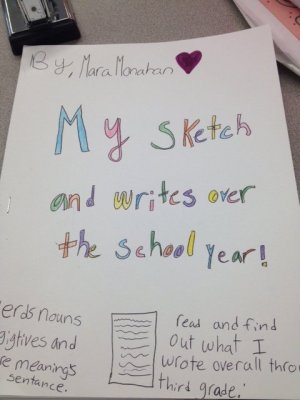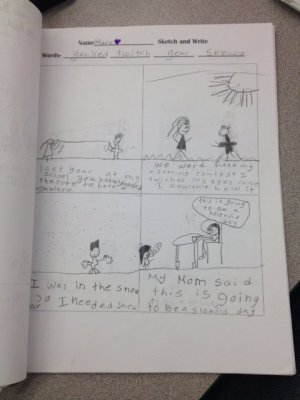Word Study Collections in the Elementary Classroom
I read Stephen King’s book, On Writing, in 2007 while attending the Pennsylvania Writing and Literature Project’s summer writing institute. One of my fellow attendees mentioned that Stephen King likes to write to heavy music like Metallica and Guns and Roses, which immediately sparked my attention. She said, “There’s more about it in his book, On Writing.” I purchased the book on the way home from the institute and read it in three days, probably one of the fastest books I’ve ever read. I went on to read many more King novels, which taught me way more about storytelling and word choice than over twenty years of schooling.
I’m here to discuss words. “The bread of writing,” as King puts it, is vocabulary. I admit it, I was totally guilty of right clicking to look up synonyms to replace over-used words. It’s not a bad technique, I learned many words. However, stopping to look up words always killed the flow of my writing. King advises to never do this. He’s written a few good books (wink), so I guess we should listen. Using the vocabulary you possess, the first word that comes to mind when writing is natural. It gives your writing authenticity. “You shouldn’t make a conscious effort to improve vocabulary.” That doesn’t mean you shouldn’t build your vocabulary. It means you shouldn’t “right click” (like I did) or have your morning coffee while hunched over a computer taking an online vocabulary quiz. King then goes on to say that, “You’ll be doing this (building vocabulary) while reading (a natural way of learning vocabulary).” Ah-ha! Okay, Mr. King. I gotcha.
A study done in 2011 by the Studies & Research Committee of the Massachusetts Reading Association states that, “Effective vocabulary instruction is characterized by deliberate selection of words to be taught and frequent opportunities for students to interact with the words in meaningful contexts. Interacting with words in multiple ways and in varied contexts results in durable word learning.” If you want to read the whole article check it out here: http://massreading.org/wp-content/uploads/2013/08/vocpaper.pdf
Something we already knew, right? So, how do we do this with our students? Of course we can’t just say, “While you’re reading absorb those words naturally, darn it.” We are teaching little kids. But just because they’re little kids doesn’t mean we have to give them a list of vocabulary words on Monday and test them on Friday. It can be more natural than that.
There are tons of ways to teach/collect words. Here’s a way I do it with my third-graders, which has been effective for a few years now.
Collecting Words
Words come from all subjects, but mostly our vocabulary words come from reading and writing. Sometimes they are self-selected (reading and writing workshops). In this case, students will all have different words pulled from conferencing between teacher and student. Sometimes we’ll use a list of vocabulary words from the story of the week or pull some words from unpacking a poem. Words come from math class (parallel, intersecting, angle), science, and social studies. We don’t study words just to study words. We pick words we’re using or think we will use in our daily lives in a third-grade class.
Sketch and Write
This word study for the week consists of four words. We collect more than four, but we choose four to study. After the four words are chosen, we…
- Discuss the definition of the word.
- Share examples of the word used in context.
- Come up with a “cheat code.” My students like using videogame terminology, so why not? A “cheat code” could be a synonym of the word or a phrase to help the student remember the meaning (Example: Release = Cheat Code: Let go).
- Now the students will add the four words to the Sketch and Write template, writing their “cheat codes” right below the word.
- Students write a sentence or explain the meaning of the word in each box.
- Students sketch the sentence. Each visual should “show” the meaning of the word
- I encourage the students to use the words while speaking and writing. I also use the words as much as possible through written and oral communication.
- My students usually complete about one Sketch and Write a week. Students store the Sketch and Writes in a reading/writing portfolio. At the end of the year, we assemble our entire collection of Sketch and Writes into an illustrated word study resource book.
The Sketch and Write is welcoming. Four words are not intimidating. Deeper thinking is more likely with fewer words. Kids interact with the words orally, in writing, and also visually. It’s fun! In the words of Stephen King, “Super. Duper. Pow!”
How do you study words?
Check out my other post on vocabulary here: http://www.edutopia.org/blog/teaching-vocabulary-elementary-gaetan-pappalardo
Here's an example of a Sketch and Write from my class:

